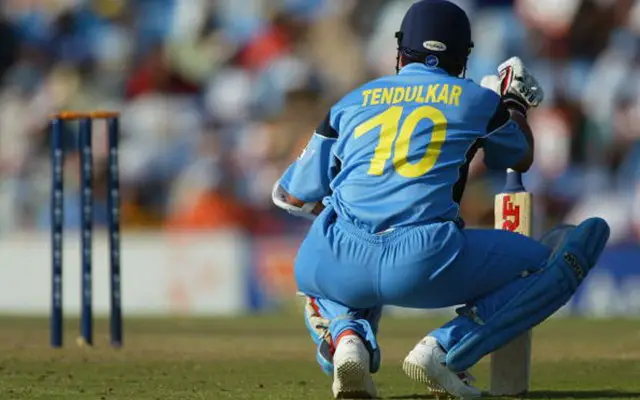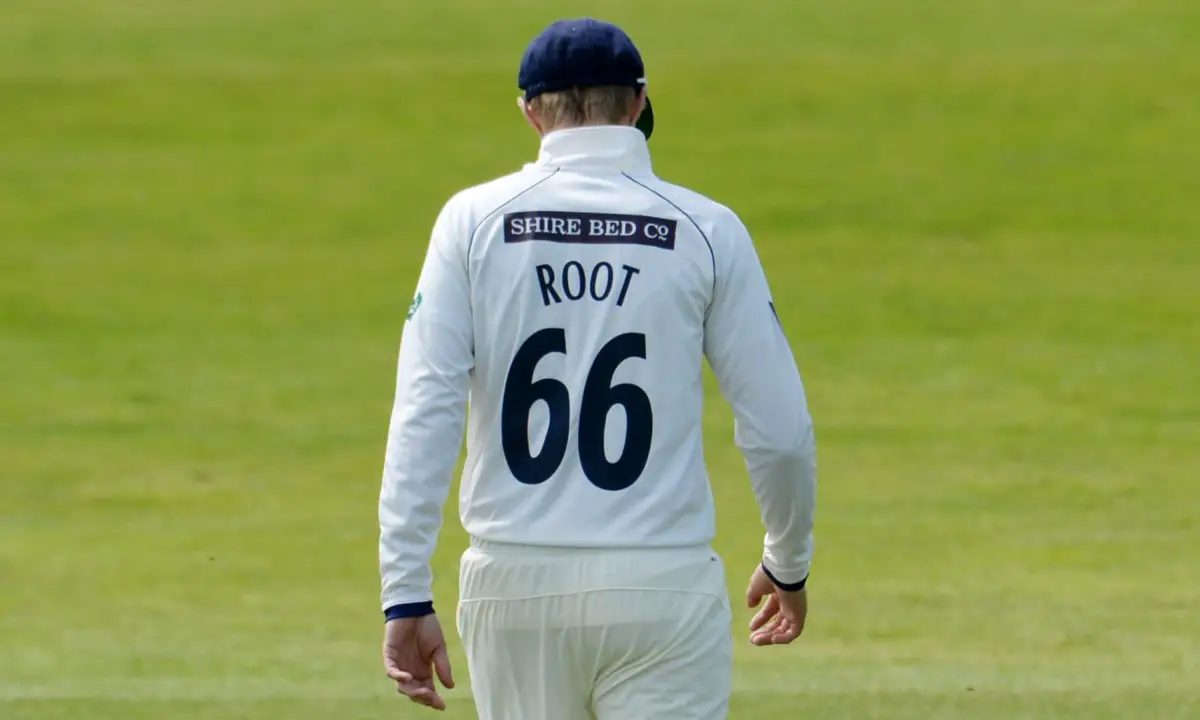Cricket is a sport that is all about numbers – and that includes what the players themselves are wearing. Have you ever wondered why a cricketer has a number on the front of his playing shirt? Or why a player might wear a specific number on the back of it? In today’s post, we share with you an interesting history and the story of numbers on cricketers’ shirts!
But first, why do cricketers have numbers on their shirts? The numbers on cricketers shirts help identify a player to the officials, commentators, or even the spectators. The numbers on the front of a player’s shirt indicate the chronological position of their appearance for a particular country. Whereas, numbers on the back are typically self-chosen.
However, these numbers are not always just useful for commentators or spectators alone. Sometimes, the jersey numbers of cricketers have a much larger significance. So, let’s get to know more about it!
Why Do Players Have Numbers on their Back?

The reasons for having numbers are plenty!
Having numbers in big bold fonts makes the job of television and radio commentators and analysts a little easier, allowing them to quickly, and accurately, identify a player on the outfield. When a player takes a brilliant catch or effects a run-out, often in the blink of an eye, it is much easier to single them out by their number.
For the international cricket player of today, a shirt with a number is much more than a quick and easy way of distinguishing their kit from a team-mate in a busy dressing room while everyone is preparing for a match. It can often be something very personal and meaningful to that particular player
Numbers, of course, also help fans who are watching the game to quickly spot their favorite player. In fact, supporters of the game also often wish to show their loyalty to their favorite player by buying a team shirt with their name and number on.
Sachin Tendulkar, for example, will forever be associated with the No.10 shirt by the Indian fans who worship him for his dazzling achievements with a bat in hand.
The numbers on the back of a players shirt is usually to identify a player in the squad. The squad number selected will typically have some personal significance to the player themselves. It can be anything from their age to religious reasons.
When Did Cricketers Start Wearing Numbers on their Shirts?
Cricket has been known to be played for over a 142 years! But, it was only fairly recently that the players started wearing jersey numbers on the back of their Shirts.
When Did Cricketers Start Wearing Numbers in ODIs?
Australia were the first team to wear numbers on the back of their shirts in one-day cricket during a ODI tri-series with Sri Lanka and West Indies in 1995-96.
Did You Know?
During the 1999 World Cup in England, shirt numbers of the captains of all the teams was 1. South African player Hansie Cronje was the only captain who retained his usual jersey no. 5 and swapped the number 1 with opener Gary Kirsten!
The trend caught on, and by the 1999 World Cup in England, all of the teams had players wearing shirts with numbers on. In that tournament, the captain of the team was given the No.1 shirt with the rest of the team numbered 2-15. But since then it has been less strict, and players have used a whole range of different numbers.
Since then, all limited-overs cricket matches (ODIs and T20s) have had numbers on the back of the cricketer’s shirt.
When Did Cricketers Start Wearing Numbers in Test Matches?

Numbers on the back of the cricketers has been a more recent addition to the test matches. Although, numbers on white shirts have been around in first-class cricket in England and Australia for some years now.
Numbers in the test matches whites got introduced for the first time during the 2019 Ashes Series between England and Australia, although the players were not required to have numbers printed on jumpers or slipovers.
The decision to put numbers on shirts was led by the ICC as part of their promotional strategy for the World Test Championship in an attempt to make the format more appealing.
However, it was not something which proved particularly popular with cricket traditionalists, including players like Brett Lee who opinioned that the ICC had “got it wrong on this one”.
When did Cricketers Start Wearing Numbers on the Front of their Shirts?
The tradition of wearing numbers on the front of cricket shirts was introduced by Steve Waugh when he took over as Australia’s Test captain in 1999, although the numbers first appeared on caps before later being put on the cricket shirts themselves. England were the first team to put them on their shirts from 2001 onwards.
What do the Numbers on the Front of the Shirt Mean?

If you have been watching international cricket for the past 20 years or so, you will notice that each player has a number on the front of their shirt as well! It is usually printed quite small in size, and placed just below to the country’s cricket badge or emblem.
The numbers on the front of the cricketer’s shirt represent the player’s position in the chronological list of players to appear for their country in the respective format of the game.
This means, if a player has a number 200 embossed on the front of their shirt, he or she is the player number 200 to represent his country in that particular format of the game.
Did You Know?
Tom Armitage is the holder of shirt No.1 for England, whereas Charles Bannerman, who scored Test cricket’s first run, and its first century, is the holder of No. 1 for Australia. Amar Singh is the holder of India’s No. 1 Test Number. He played his first Test at Lord’s in June 1932.
Since Test cricket dates back further in history, the numbers tend to be higher for newer players than in the shorter formats of the game such as ODI or Twenty20 cricket.
Amar Singh is the holder of India’s No. 1 Test number. He played in India’s first Test against England at Lord’s in June 1932. There have been 295 players to represent India in Test cricket since. Virat Kohli is the 269th player with Shahbaz Nadeem (296) is the latest. Who will get the lucky No. 300 shirt for India? We will have to wait and see.
How are Jersey Numbers Assigned in Cricket?
As we learned, the numbers on the front are a assigned by the respective cricket board of their country. This is based on their position on the historical record list.
For the numbers on the back of their shirts, ICC nowadays permits players to choose their own numbers
However, some international cricket boards may have a particular number off limits to players. Sachin Tendulkar famously wore the No.10 jersey – which has unofficially been retired by the BCCI in tribute to the great batsman. Rohit Sharma, who wanted the no. 10 jersey after Sachin’s retirement, was denied by the BCCI.
It is interesting to note that Sachin actually began his ODI career with the No.99 shirt.
Some Interesting Story about Jersey Numbers of Cricketers!
When two or more players make their debut together in the same match, the number on the front of their shirt is chosen alphabetically.
In an interesting incident, Michael Slater thought he was Australia’s 356th Test player. So, he bought an MS356 car license plate and got a tattoo with the number. To his surprise, he then discovered that he was actually No. 357! This happened because alphabetically Brendan Julian, who also made his debut during the same match, was assigned the earlier number.
Luckily for Michael Slater, team-mate Brendan Julian agreed to swap the number!
Current England Test captain Joe Root decided on No.66 for the back of his shirt – it was a play on the words to the famous and historic ‘Route 66’ highway which crossed the United States of America from east to west. Australia’s legendary leg-spinner Shane Warne choose No.23, the number he wore while playing Australian Rules Football in his youth.
Final Thoughts
In cricket we rightly focus on numbers at every moment: the number of runs, number of wickets and the number of catches are never far from our minds whether we are playing or watching the game.
But beyond statistics of the game, the numbers that players wear on their shirts also have a wider significance. The numbers help those of us watching in the stands, or on television, to easily identify players, and also are a great way of connecting those who play the game with cricket’s rich history.

